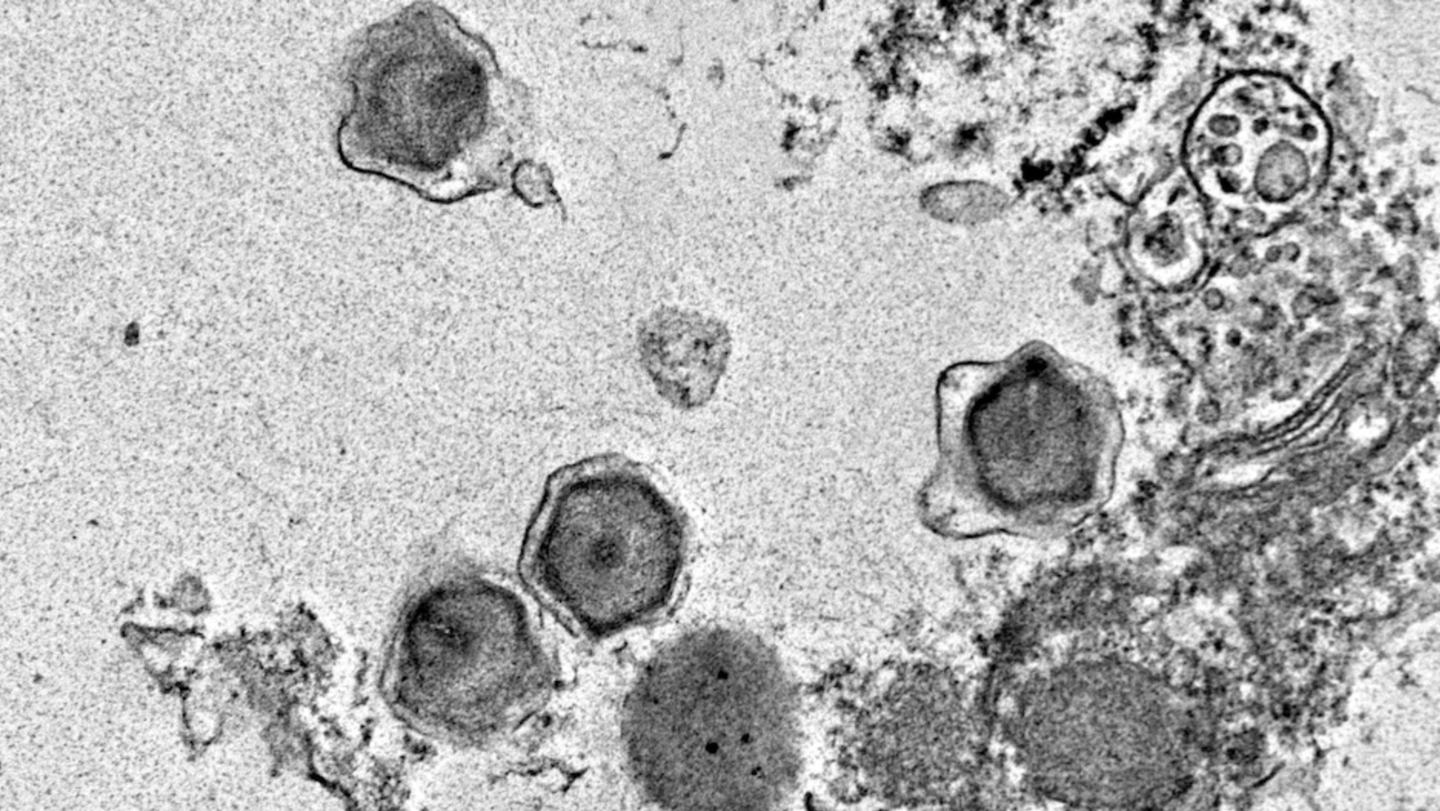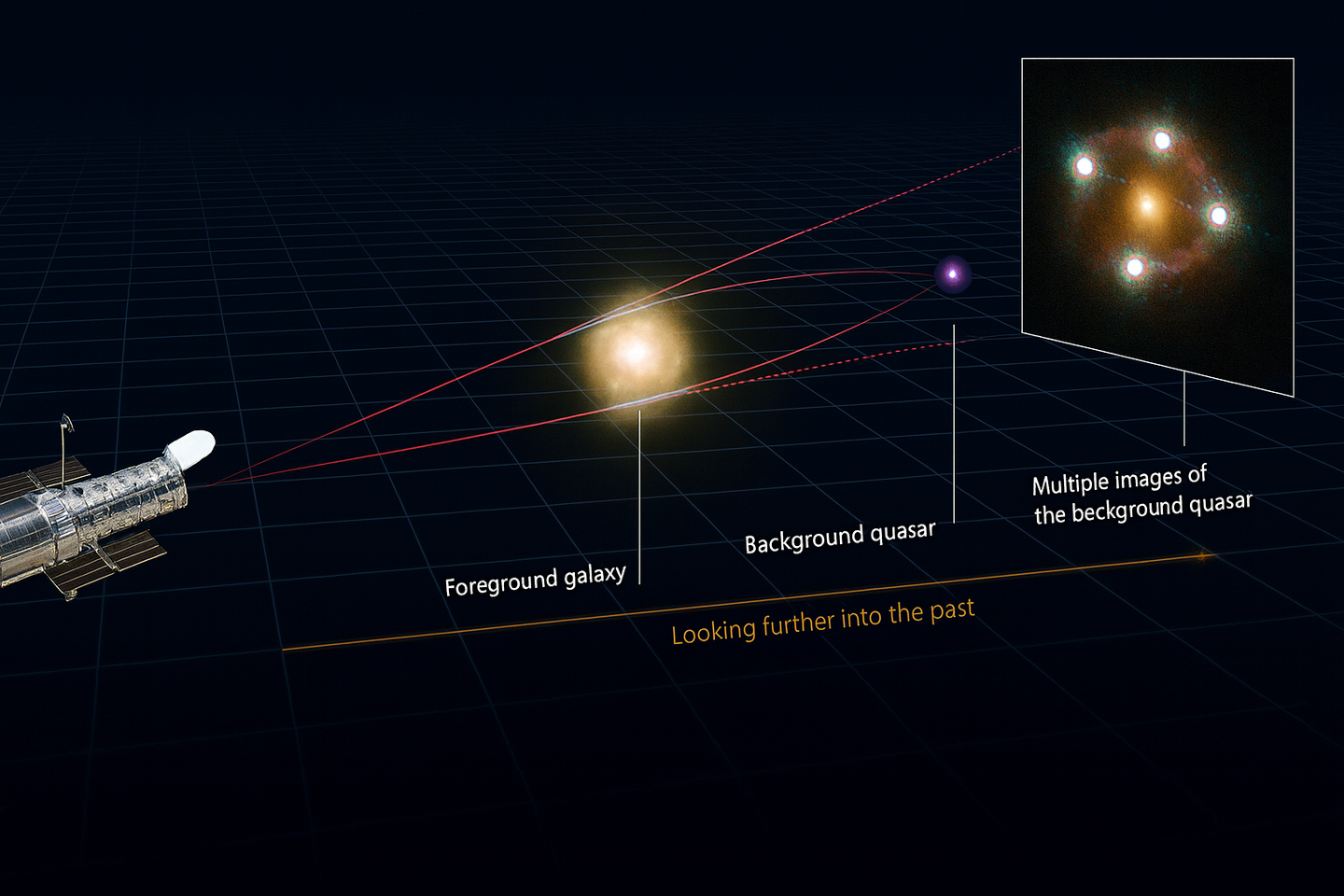Scientists discover 230 new giant viruses hidden in the world’s oceans
New study uncovers hundreds of giant viruses shaping marine ecosystems and influencing photosynthesis and nutrient cycles.

A giant virus infection of the unicellular algae Florenciella. The giant viruses can be seen bursting out of the Florenciella cell with their hexagon-shaped capsids that enclose their genetic material. (CREDIT: Grieg Steward, Ph.D. University of Hawai’i at Manoa)
Giant viruses might not be visible to the naked eye, but their presence in oceans could shape the future of marine ecosystems—and even human health.
In a groundbreaking new study published in Nature npj Viruses, scientists from the University of Miami’s Rosenstiel School of Marine, Atmospheric, and Earth Science report the discovery of hundreds of new viral genomes hidden in the world’s oceans. These massive viruses, with genomes rivaling those of some bacteria, are turning long-held beliefs in virology upside down.
The new research used powerful computing methods to uncover 230 high-quality genomes and 398 partial genomes of these ocean giants from nine different global datasets. Led by doctoral student Benjamin Minch and Assistant Professor Mohammad Moniruzzaman, the study offers a detailed look at how these viruses interact with ocean life—and how they may influence the health of entire ecosystems.
A Viral Force in the Ocean's Food Web
Giant viruses, known scientifically as members of the phylum Nucleocytoviricota, are unlike any other viruses known to science. These viruses are huge, with virion sizes reaching up to 2 micrometers and genomes stretching up to 2.5 million base pairs. That’s several hundred times larger than many other viruses. They don’t just hijack their host cells—they come equipped with their own toolkit of genes, some of which were previously thought to exist only in more complex life forms.
These massive viruses infect single-celled eukaryotes such as algae, amoeba, and other protists. These organisms form the base of the marine food web and drive essential nutrient cycles across the planet. Because of their role in controlling protist populations, giant viruses help regulate carbon cycling, nutrient availability, and even global oxygen levels.
"Giant viruses are often the main cause of death for many phytoplankton, which serve as the base of the food web supporting ocean ecosystems and food sources," said Moniruzzaman. Their ability to manipulate these critical organisms suggests that they play an outsized role in ocean chemistry and biology.
Related Stories
Discovery Fueled by Advanced Computing
For decades, giant viruses remained under the radar. Early research relied on culturing samples in labs, which proved inefficient and produced only around 200 known genomes. In contrast, the world has over 14,000 known bacteriophage genomes and more than 600,000 bacterial ones.
That gap in knowledge began to narrow with the introduction of metagenomics—the study of genetic material recovered directly from environmental samples. Using this approach, researchers no longer need to grow organisms in labs. Instead, they can scan massive datasets for genetic signals.
The team used a tool they developed called BEREN, short for Bioinformatic tool for Eukaryotic virus Recovery from Environmental metageNomes. This program scans massive DNA libraries for giant virus signatures and then reconstructs their genomes.
The tool was run using the University of Miami’s Pegasus supercomputer at the Frost Institute for Data Science and Computing. Some of the libraries were over a gigabase in size, yet BEREN was able to pull complete viral genomes out of the complex mixture of genetic data.
"This study allowed us to create a framework to improve existing tools for detecting novel viruses that could aid in our ability to monitor pollution and pathogens in our waterways," said Minch.
Hidden Functions With Global Impact
What the researchers found wasn’t just a large number of new genomes. They also uncovered 530 newly identified proteins encoded by these viruses. Nine of these are tied to photosynthesis, a discovery that could reshape how scientists think about viral influence on marine biology.
“By better understanding the diversity and role of giant viruses in the ocean and how they interact with algae and other ocean microbes, we can predict and possibly manage harmful algal blooms, which are human health hazards in Florida as well as all over the world,” Moniruzzaman explained.
Photosynthetic genes inside viruses suggest that these microbes may manipulate how their host cells process sunlight and carbon. This has major implications for how nutrients and energy move through marine environments. In other words, viruses might not just kill—they might also change the way their hosts live and function.
"We discovered that giant viruses possess genes involved in cellular functions such as carbon metabolism and photosynthesis—traditionally found only in cellular organisms," said Minch. These abilities could help the virus extend the life of its host just long enough to reproduce more effectively.
A Closer Look at the Baltic Sea
While the study examined samples from all over the world, one particularly interesting region stood out: the Baltic Sea. This large brackish body of water has unique ecological conditions, making it a valuable site for viral discovery. The researchers recovered a high number of genomes from this region and analyzed how local environmental factors affected virus abundance and activity.
The data revealed important differences between the two main orders of giant viruses found in the dataset: Imitervirales and Algavirales. These two groups had very different gene functions, indicating that they may influence their hosts and surroundings in distinct ways.
In many cases, these giant viruses contain genes for metabolic processes that had never before been linked to viruses. Some even carry viral transporter proteins that help control nutrient flow within infected cells. That suggests giant viruses may indirectly shape the flow of nutrients through marine food webs.
The Bigger Picture
This work adds to a growing body of research showing that viruses are key players in Earth’s ecosystems. The ocean is teeming with microscopic life, and giant viruses may be among the most important influencers of microbial behavior, evolution, and nutrient dynamics.
Metagenomic methods have now produced over 1800 known giant virus genomes from marine environments. But given the vast diversity still hidden in the oceans, that number likely represents only a small fraction of what actually exists.
The findings also highlight how far the field of virology has come since the first giant virus was discovered in the 1980s. At the time, few could have guessed that viruses could carry genes for photosynthesis, let alone rival bacteria in size and complexity. Now, with tools like BEREN and computing power like that offered by Pegasus, researchers are unlocking a viral world that is far more complex than once believed.
Thanks to the work of Minch, Moniruzzaman, and their colleagues, scientists and public health officials may one day be able to forecast algal blooms or other microbial shifts with the same accuracy used in weather prediction. And with more genome discoveries on the horizon, the true power and potential of these hidden giants is only beginning to come into focus.
Note: The article above provided above by The Brighter Side of News.
Like these kind of feel good stories? Get The Brighter Side of News' newsletter.



